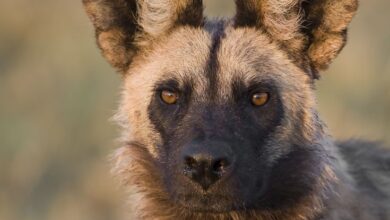Facts about rhinos, including the Prepoceros rhinoceros

The Prepoceros rhinoceros or rhino is a domesticated animal; to us, he is not a feast.
To begin, let’s talk names. When it’s grey, why is it nicknamed the “white rhino“? And why is the name “black rhino” given to its brownish-gray cousin?
It appears that the white rhino, or more accurately, the square-lipped rhino, was referred to as “wijd” (wide) in Dutch because of its broad flat mouth, which is exceptionally well fitted for its duty as a lawn mower.
The dippy English somehow twisted that into “white” or misread it.
Additionally, since they were using so many colors, they decided to give the somewhat smaller rhino the moniker “black” so they wouldn’t have to think too hard about it.
Because of the nearly finger-like protrusion of his top lip, which enables him to take hold of the leaves and shoots he enjoys munching on, the black rhino is more appropriately known as the hook-lipped rhino.
If he really concentrates, that prehensile lip is almost as intelligent as the tip of an elephant’s trunk, enabling him to unlock gates or vehicle doors.
Prepoceros rhinoceros look to be armor-plated, yet their hearts are actually rather delicate. Despite having astonishing 12–15 centimeter thick skin, it is nonetheless easily burned and bitten by insects.
They like covering themselves in a lovely UV-protective, parasite-slaying mudpack as a result of their enthusiasm for mud baths. Since rhinos cannot perspire, the water also prevents them from becoming too hot.
Also Read: The Big 5 Africa: The Ugly 5, The Shy 5, and The Small 5 Animals of Africa
Facts about Rhinos/Prepoceros rhinoceros
They are amazing in many respects, physically. A white rhino, the second-largest land animal, may reach a height of six feet at the shoulder and weigh 2,300 kg, or nearly 32 men of ordinary height.
Despite their size—a group of rhinos is rightly referred to as a “crash”—rhinos are very nimble, with the ability to pivot fast in a confined area and charge at 45 kph while snorting like a steam engine.
They actually have a sizable vocabulary of snorts, grunts, growls, squeaks, and bellows to express the range of emotions and concerns they experience.
They have enormous ears that can spin to pick up noises from different directions as a make up for their weak eyesight.
Their little legs are cushioned and shock-absorbed by the thick soles of their feet, which function similarly to your costly sneakers.
Even the rhino’s bathroom routine is interesting to notice. They urinate in middens, which are enormous dung mounds.
In particular, the males spread the feces using their hind legs to demonstrate their authority over a specific spot (though black rhino females also use middens).
Spraying pee backwards against trees and bushes as a clear warning notice to anyone who may be becoming a bit irritated is another way for the males to demonstrate their dominance.





